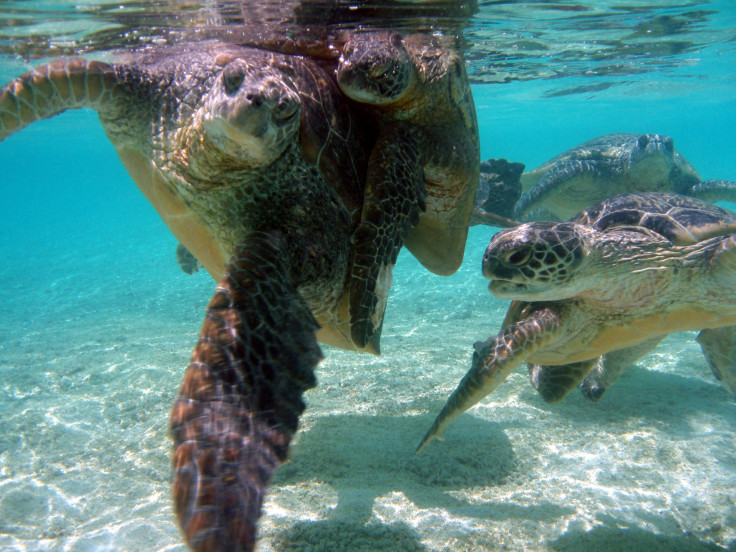Florida's Freshwater Turtles Are In Danger Due To Climate Change

The turtles in the Santa Fe river basin, a globally significant turtle diversity hotspot, are struggling due to pollution, climate change and over-extraction of water.
The lower 23 miles of Santa Fe river has almost 50 freshwater springs which historically supported lush native grass meadows underneath the water surface, on which the turtles thrived. This made this region a great home for turtles.
However, the freshwater aquifer which comes out as springs in the river, provide water to 90% of people in Florida, which is now the third most populous state in the U.S. The river ecosystem is also being altered due to the pollution from the farms and households, with carpets of algae now forming on the freshwater springs, in place of grass which is eaten by the turtles, a Huffington Post report said.
According to the report, people are unaware that the ecosystem that houses 14 native species of freshwater turtles, which is equal to what is found in the entire Amazon river system is slowly being destroyed, endangering them.
As the lust meadows keep getting replaced by algae, the turtles are forced to go farther in search of food. If this continues to happen, experts predict that there will be a 70% decrease in the population of turtles in the lower Santa Fe river.
Jerry Johnston, a turtle biologist said that the river had completely changed its character. According to him people are unaware of what is happening and informing them about the beauty and plight of the freshwater turtles is extremely important.
Swimming with turtles in Florida's troubled rivers and streams. https://t.co/be0xtnklQs
— HuffPost (@HuffPost) September 6, 2019
“If you Google the word ‘turtle,’ what do most people think of? Sea turtles, right? So, one of the goals is to just get people to become aware that there are more than just sea turtles in Florida,” he said.
Johnston began observing freshwater turtles along with one of his zoology students Travis Thomas in 2004. In 2012, they realized that the data that was being collected by them could, which included studying the turtles’ response to the changing ecosystem, could serve a bigger purpose.
Long term rainfall trends, increased pumping and a higher level of nitrates in the groundwater have resulted in the amount of dissolved oxygen in the springs decreasing gradually. This could affect the entire river ecosystem adversely.
Instead of communicating this complex data to people, he showed them the photos of turtle and the work that they were doing, which made more people wanting to come and join them. Johnson’s Santa Fe River Turtle project now has more than 200 people studying turtles in Florida.
He intends to make more people aware of the plight that the turtles face and also the danger the ecosystem faces.
“The turtles are telling us that we have a problem. It is our job to listen and solve the problem,” he said.
© Copyright IBTimes 2024. All rights reserved.





















